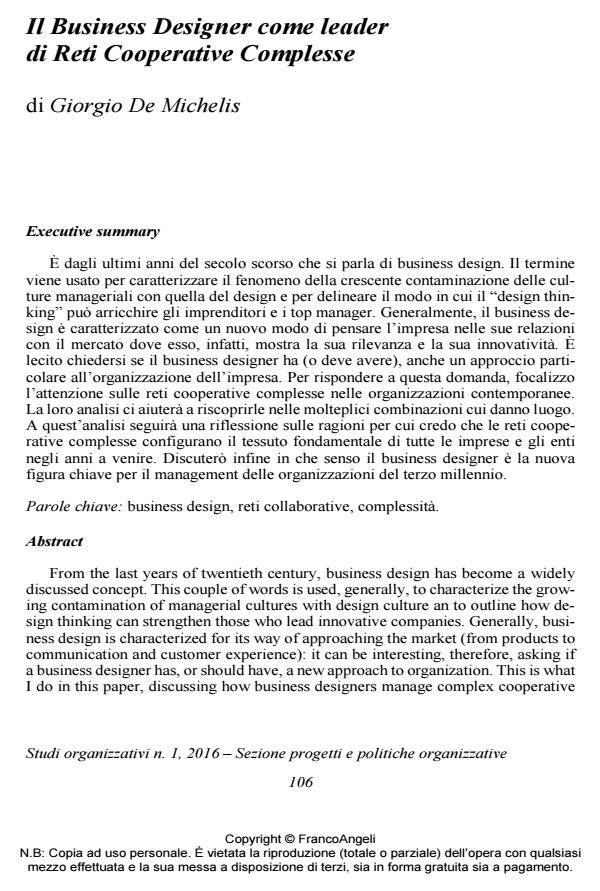Il Business Designer come leader di Reti Cooperative Complesse
Journal title STUDI ORGANIZZATIVI
Author/s Giorgio De Michelis
Publishing Year 2016 Issue 2016/1
Language Italian Pages 19 P. 106-124 File size 186 KB
DOI 10.3280/SO2016-001005
DOI is like a bar code for intellectual property: to have more infomation
click here
Below, you can see the article first page
If you want to buy this article in PDF format, you can do it, following the instructions to buy download credits

FrancoAngeli is member of Publishers International Linking Association, Inc (PILA), a not-for-profit association which run the CrossRef service enabling links to and from online scholarly content.
From the last years of twentieth century, business design has become a widely discussed concept. This couple of words is used, generally, to characterize the growing contamination of managerial cultures with design culture an to outline how design thinking can strengthen those who lead innovative companies. Generally, business design is characterized for its way of approaching the market (from products to communication and customer experience): it can be interesting, therefore, asking if a business designer has, or should have, a new approach to organization. This is what I do in this paper, discussing how business designers manage complex cooperative networks within their companies. I will claim that complex cooperative networks are becoming, today, the texture of innovative organizations and that, therefore, business designer is merging as the key figure of modern organizations.
Keywords: Business designer, collaborative networks, complexity
- La rivoluzione digitale per la creazione di lavoro e di valore Giorgio De Michelis, in STUDI ORGANIZZATIVI 1/2019 pp.125
DOI: 10.3280/SO2019-001005
Giorgio De Michelis, Il Business Designer come leader di Reti Cooperative Complesse in "STUDI ORGANIZZATIVI " 1/2016, pp 106-124, DOI: 10.3280/SO2016-001005